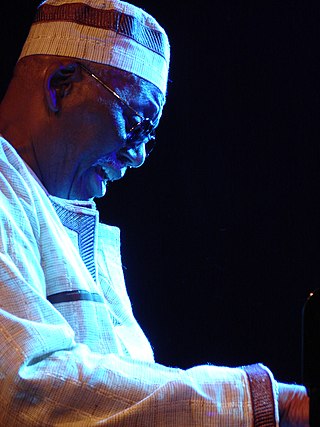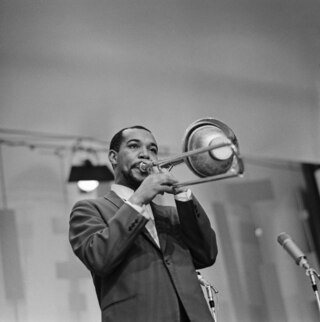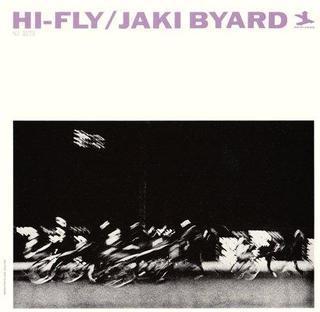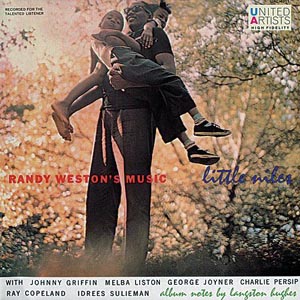Related Research Articles

Coleman Randolph Hawkins, nicknamed "Hawk" and sometimes "Bean", was an American jazz tenor saxophonist. One of the first prominent jazz musicians on his instrument, as Joachim E. Berendt explained: "there were some tenor players before him, but the instrument was not an acknowledged jazz horn". Hawkins biographer John Chilton described the prevalent styles of tenor saxophone solos prior to Hawkins as "mooing" and "rubbery belches". Hawkins denied being first and noted his contemporaries Happy Caldwell, Stump Evans, and Prince Robinson, although he was the first to tailor his method of improvisation to the saxophone rather than imitate the techniques of the clarinet. Hawkins' virtuosic, arpeggiated approach to improvisation, with his characteristic rich, emotional, and vibrato-laden tonal style, was the main influence on a generation of tenor players that included Chu Berry, Charlie Barnet, Tex Beneke, Ben Webster, Vido Musso, Herschel Evans, Buddy Tate, and Don Byas, and through them the later tenormen, Arnett Cobb, Illinois Jacquet, Flip Phillips, Ike Quebec, Al Sears, Paul Gonsalves, and Lucky Thompson. While Hawkins became known with swing music during the big band era, he had a role in the development of bebop in the 1940s.
Jerome Richardson was an American jazz musician and woodwind player. He is cited as playing one of the earliest jazz flute recordings with his work on the 1949 Quincy Jones arranged song "Kingfish".

John Carl Hendricks, known professionally as Jon Hendricks, was an American jazz lyricist and singer. He is one of the originators of vocalese, which adds lyrics to existing instrumental songs and replaces many instruments with vocalists, such as the big-band arrangements of Duke Ellington and Count Basie. He is considered one of the best practitioners of scat singing, which involves vocal jazz soloing. Jazz critic and historian Leonard Feather called him the "Poet Laureate of Jazz", while Time dubbed him the "James Joyce of Jive". Al Jarreau called him "pound-for-pound the best jazz singer on the planet—maybe that's ever been".

Idrees Sulieman was an American bop and hard bop trumpeter.

Randolph Edward "Randy" Weston was an American jazz pianist and composer whose creativity was inspired by his ancestral African connection.
Lambert, Hendricks & Ross were an American vocalese trio formed by jazz vocalists Dave Lambert, Jon Hendricks and Annie Ross. From 1962 to 1964, Ross was replaced by vocalist Yolande Bavan.

Julius Watkins was an American jazz musician who played French horn. Described by AllMusic as "virtually the father of the jazz French horn", Watkins won the Down Beat critics poll in 1960 and 1961 for Miscellaneous Instrument.
Ray Copeland was an American jazz trumpet player and teacher.
"Airegin" is a jazz standard composed by American jazz saxophonist Sonny Rollins in 1954. Rollins chose the name "Airegin", as it is an anadrome of "Nigeria".
Ernest Andrew Royal was a jazz trumpeter. His older brother was clarinetist and alto saxophonist Marshal Royal, with whom he appears on the classic Ray Charles big band recording The Genius of Ray Charles (1959).
"East of the Sun " is a popular song written by Brooks Bowman, an undergraduate member of Princeton University's Class of 1936, for the 1934 production of the Princeton Triangle Club's production of Stags at Bay. It was published in 1934 by Santly Bros. and soon became a hallmark of the Princeton Tigertones, Princeton University's signature all-male a cappella group. The standard is also sung by the Princeton Nassoons.

The Hottest New Group in Jazz, also known by its full title Lambert, Hendricks, & Ross!: "The Hottest New Group in Jazz" or alternatively considered self-titled, is the fourth album by Lambert, Hendricks & Ross, released in 1960. The title is a quote from Downbeat magazine. The CD reissue combines the full original album with the group's two other Columbia albums: the 1961 LP Lambert, Hendricks & Ross Sing Ellington and the 1962 LP High Flying. The CD release additionally includes seven previously unreleased "rarities", recorded in 1962. On all these recordings, the group is backed up by the Ike Isaacs Trio.
"Cotton Tail" is a 1940 composition by Duke Ellington. It is based on the rhythm changes from George Gershwin's "I Got Rhythm". The first Ellington recording is notable for the driving tenor saxophone solo by Ben Webster. Originally an instrumental, "Cotton Tail" later had lyrics written for it by Ellington. Later, more lyrics were written, based on the 1940 recording, by Jon Hendricks, and recorded by Lambert, Hendricks and Ross.

Benny Powell was an American jazz trombonist. He played both standard (tenor) trombone and bass trombone.
"Four" is a 1954 jazz standard. It was first recorded and arranged in 1954 by jazz trumpeter Miles Davis and released on his album Miles Davis Quartet. It is a 32-bar ABAC form.

Hi-Fly is an album by pianist Jaki Byard recorded in 1962 and released on the New Jazz label.

Little Niles is an album by American jazz pianist Randy Weston recorded in 1958 and first released on the United Artists label. The album was later released as part of a Blue Note compilation under the same title. All the tracks are Weston originals and, as indicated in the LP's liner notes by Langston Hughes, the album was inspired by Weston's children Niles and Pamela, who are directly referenced in "Little Niles" and "Pam's Waltz" and feature in the cover photograph. As Hughes notes of the compositions, "All in three-quarter time, these charming little vignettes escape rigidity of beat by a fluid flow of counter-rhythms and melodies, one against another, that brings continuous delight."
"Hi-Fly" is one of the best known compositions by American jazz pianist Randy Weston, written in the 1950s and inspired by his experience of being 6 feet 8 inches tall, "and how the ground looks different to you than everybody else". Since first being recorded on 1958's New Faces at Newport, "Hi-Fly" appears on several other albums by Weston, including Live at the Five Spot (1959), Niles Littlebig (1969), Tanjah (1973), Perspective, Rhythms and Sounds (1978), Earth Birth (1995), Zep Tepi (2005), and The Storyteller (2009).
Salute to the Flute is an album by American jazz flautist Herbie Mann featuring tracks recorded in 1957 for the Epic label.

The Oscar Pettiford Orchestra in Hi-Fi Volume Two is an album by bassist/cellist and composer Oscar Pettiford that was recorded in 1957 and first issued on the ABC-Paramount label.
References
- ↑ "Roots Music: Randy Weston – 'Little Niles'", The Jazz Record.
- ↑ "Lambert, Hendricks & Ross Little Niles The Swingers 1958". YouTube.
- ↑ "Little Niles | Versions", SecondHand Songs.